
© Rachel Neville. (Click image for larger version)
Dance Theatre of Harlem
Divertimento, When Love, Change, Coming Together
★★✰✰✰
New York, City Center
8 April 2016
www.dancetheatreofharlem.org
www.nycitycenter.org
The Mission
The thing about Dance Theatre of Harlem is that you want them to be really, really good. Their mission, the diversification of American ballet, is such an important one. Their history – the company was founded in 1969 by Arthur Mitchell, a New York City Ballet star and the first African American to become a permanent member of a major ballet company – is noble. Their director, Virginia Johnson, a great dancer herself, is thoughtful, nurturing, serious. The dancers come from all over and truly reflect our world.
But the company can’t seem to completely shake off its recent troubles. In 2004, it was forced to close for lack of funds and only returned to operations in 2012. Its core of dancers dispersed and a new generation had to be brought in. Last year, it was forced to scale down from 18 dancers to 14. A perusal of the roster reveals that many of the dancers have only been with the company for one or two years. It’s not easy to create a cohesive whole under these circumstances. DTH seems to be stuck in startup mode. The season that is just ending underscores this.

© Rachel Neville. (Click image for larger version)
It included several new works, two of them by women, part of a worthy new initiative, “Women Who Move Us.” Divertimento was a charming if lightweight pastiche of classical ballet tropes by the Russian-born Elena Kunikova, a well-known teacher and stager of nineteenth-century ballets. (She even works with the Trocks!) The other was Change, a very different sort of ballet that attempts to combine pointe-work with African and African American motifs, by the modern-dance choreographer Dianne McIntyre. On the program I saw (April 8) there was yet another work by a woman (what an anomaly!), a gushing pas de deux about young love and attraction called When Love, by the former William Forsythe dancer Helen Pickett. She’s now resident choreographer for the Atlanta Ballet. The closer was Nacho Duato’s Coming Together, from 1991.
So far so good. But the program also highlighted some of the company’s persistent weaknesses, particularly noticeable in Kunikova’s Divertimento, set to Glinka’s Divertimento Brillante, which uses themes from Bellini’s belcanto opera La Sonnambula. (Wonderful music that gets under your skin.) The dancers here, working in a distilled, classical style, looked rather out of their depth: wobbles galore, flubbed partnering, a lack of cohesion, and a general stiffness. Only a few of the qualities that would show up in other works – Ingrid Silva’s fluid movement quality and Dylan Santos’s crisp, energetic jump – came through here.

© Jeff Cravotta. (Click image for larger version)
Change, a piece that relied a bit too much on fierce poses and fiery glances – it is inspired, I’ve read, by black women through history – revealed another issue: a lack of authority. McIntyre had the three dancers (Stephanie Rae Williams, Lindsey Croop, and Silva) perform it with their hair loose, tilting and rounding their backs or rolling their shoulders, skating and staggering on their points. Their movements were accompanied by drumming or spirituals sung by the Spelman College Glee Club (both recorded), and in a series of solos, by their own yelps and guttural screams. The dancers executed the movement convincingly, but couldn’t quite muster the oversized attack to pull off the warrior-like feel of the piece. Politeness and fierceness make an odd mix.
Pickett’s When Love was a more straightforward pas de deux, full of yielding falls, playful jostling and small gestures: a caress, a tap, a hand to the face. It was charming, and winningly danced by Chrystyn Fentroy – possibly the company’s strongest technician – and Jorge Andres Villarini. As was the final work, Duato’s Coming Together, a rather relentless race to the finish set to a driving score by Frederic Rzewski that combines minimalist ostinatos with phrases from a letter by a man killed during the Attica prison riot. A voice intones “I think” and “I am in excellent physical and emotional health” over and over as the dancers spin, run, leap and dive or engage in vigorous partnering. (In the end, the men’s tops spell out the words “I think.”) The feel is somewhat similar to that of Twyla Tharp’s In the Upper Room, though without the exhilarating buildup.
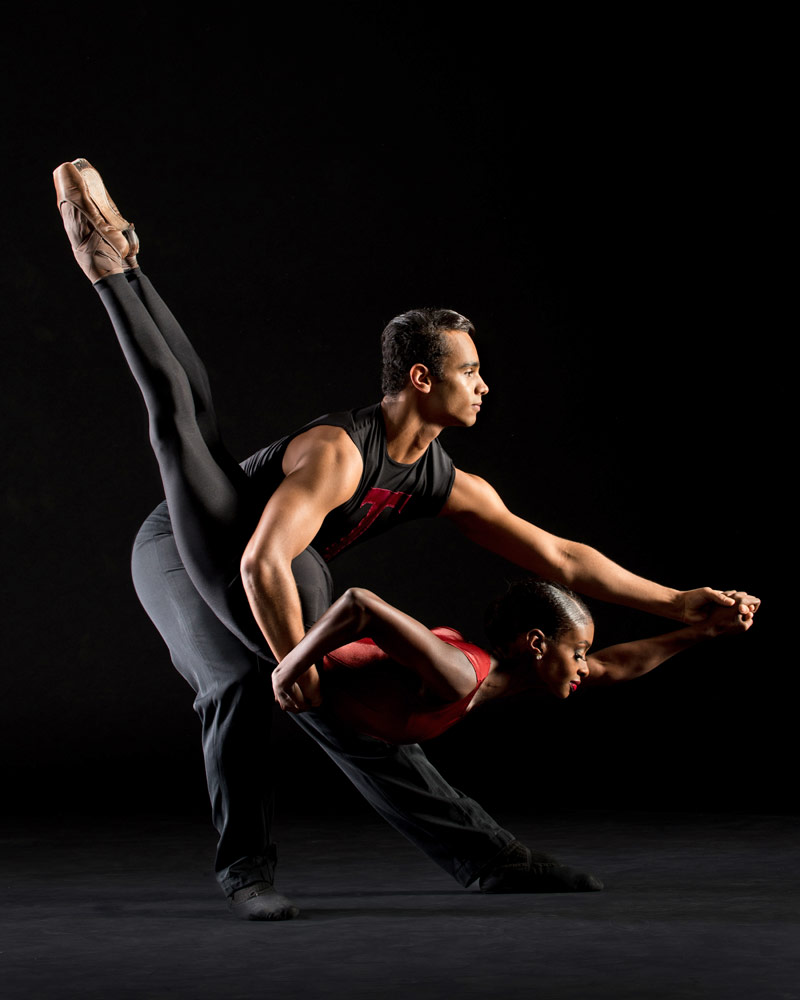
© Rachel Neville. (Click image for larger version)
Here, at last, the dancers seemed completely themselves, unleashed and deployed to full effect. Then again, they’ve been performing it since last year (the company premièred the work in April of 2015). The eye continually went to Dylan Santos, with his electric jump, and Silva, whose silken phrasing made the choreography look not just energetic, but full and nuanced. Which is exactly what one wants from Dance Theatre of Harlem, or any other dance company for that matter.












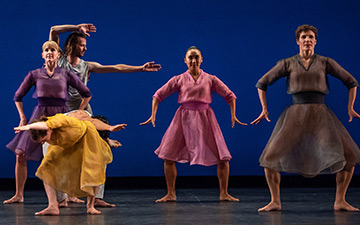

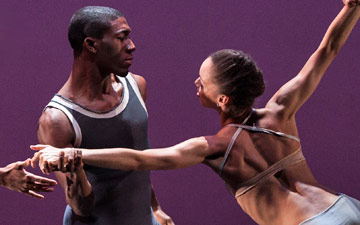
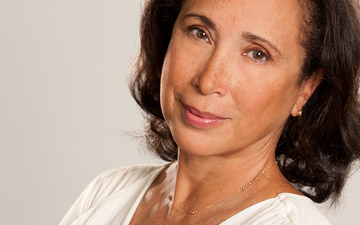
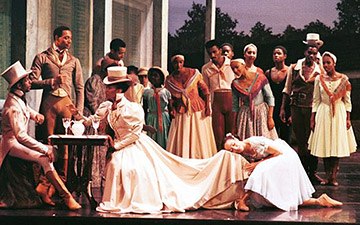
You must be logged in to post a comment.